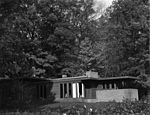WPNI
1963 establishments in Massachusetts2013 disestablishments in MassachusettsAmherst, MassachusettsDefunct mass media in MassachusettsDefunct radio stations in the United States ... and 6 more
Mass media in Hampshire County, MassachusettsPamal BroadcastingRadio stations disestablished in 2013Radio stations established in 1963Radio stations in MassachusettsUse mdy dates from June 2023

WPNI (1430 AM) was an American radio station licensed by the Federal Communications Commission (FCC) to serve the community of Amherst, Massachusetts.
Excerpt from the Wikipedia article WPNI (License: CC BY-SA 3.0, Authors, Images).WPNI
Porter Drive,
Geographical coordinates (GPS) Address Nearby Places Show on map
Geographical coordinates (GPS)
| Latitude | Longitude |
|---|---|
| N 42.357027777778 ° | E -72.486472222222 ° |
Address
WTTT-AM (Amherst)
Porter Drive
01004
Massachusetts, United States
Open on Google Maps








